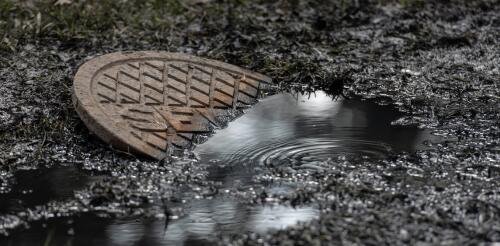Sewer systems
Across the U.S., children and adults are increasingly exposed to harmful chemicals from a source few people are even aware of. It begins on a street outside a home or school, where a worker in a manhole is repairing a sewer pipe. The contractor inserts a resin-soaked sleeve into the buried pipe, then heats it, transforming the resin into a hard plastic pipe. This is one of the cheapest, most common pipe repair methods, but it comes with a serious risk: Heating the resin generates harmful fumes that can travel through the sewer lines and into surrounding buildings, sometimes several blocks away. These chemicals have made hundreds of people ill, forced building evacuations and even led to hospitalizations. Playgrounds, day care centers and schools in several states have been affected, including in Colorado, Connecticut, Massachusetts, Michigan, Pennsylvania, Washington and Wisconsin. With this sewer pipe repair method, the chemical wast...
When storms like Hurricane Ian strike, many people have to cope afterward with losing water service. Power outages mean that pumps can’t process and treat drinking water or sewage, and heavy stormwater flows can damage water mains. Ian’s effects echoed a similar disaster in Jackson, Mississippi, where rising river water overwhelmed pumps at the main water treatment plant on Aug. 29, 2022, following record-setting rain. The city had little to no running water for a week, and more than 180,000 residents were forced to find bottled water for drinking and cooking. Even after water pressure returned, many Jackson residents continued to boil their water, questioning whether it was really safe to drink. Jackson had already been under a boil-water notice for more than a month before the crisis, which arrived like a slow-motion bullet to the city’s long-decaying infrastructure. Now, Jackson and its contractors face lawsuits and a federal investigation....
The U.S. Supreme Court will test how flexible the EPA and states can be in regulating water pollution under the Clean Water Act when it hears oral argument in City and County of San Francisco v. Environmental Protection Agency on Oct. 16, 2024. This case asks the court to decide whether federal regulators can issue permits that are effectively broad orders not to violate water quality standards, or instead may only specify the concentrations of individual pollutants that permit holders can release into water bodies. My research focuses on water issues, including the Clean Water Act. This case involves both federal and state authority to issuing permits, and it will be interesting to see where the court focuses. While justices have been willing to limit the EPA’s authority under the act, they traditionally have allowed states broad authority to protect water quality. Thus, while some fear that this case is yet another occasion for the court to limit the EPA’s authorit...


